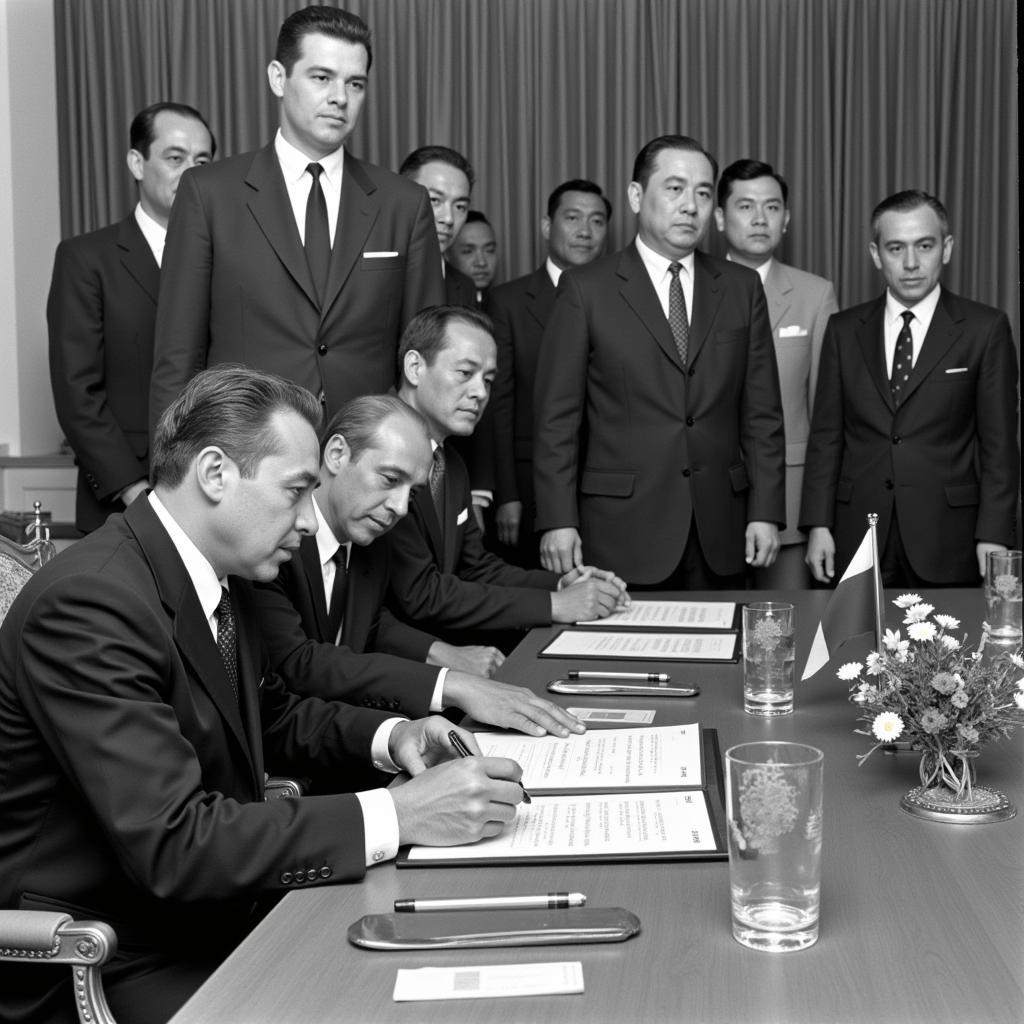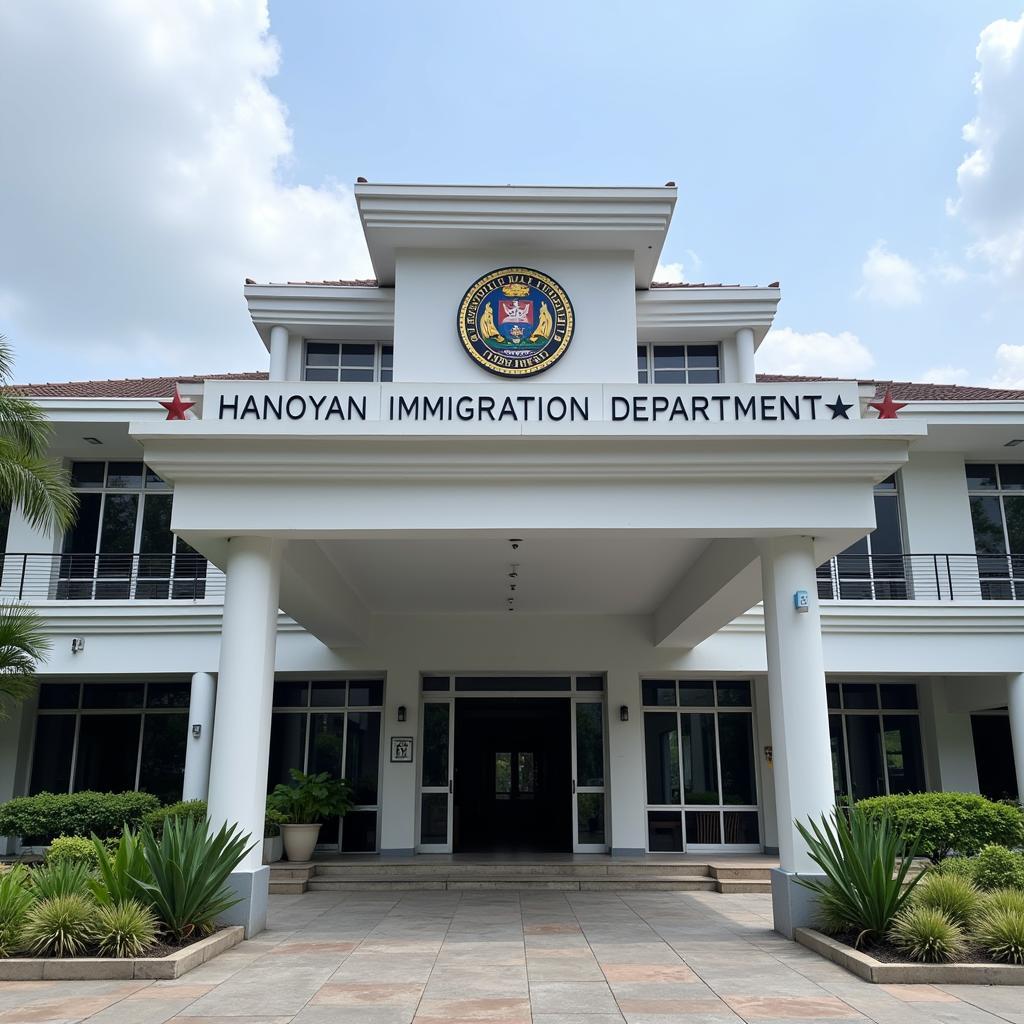ASEAN, or the Association of Southeast Asian Nations, often piques curiosity as a seemingly monolithic entity. Yet, within this intriguing region lies a tapestry of diverse cultures, economies, and political landscapes. Grasping ASEAN as a general concept requires delving into its historical roots, multifaceted structure, and the unifying principles that bind its member states.
Delving into ASEAN’s Origins: From Discord to Collaboration
The genesis of ASEAN can be traced back to 1967, a time marked by Cold War tensions and regional instability. Five Southeast Asian nations – Indonesia, Malaysia, the Philippines, Singapore, and Thailand – recognized the imperative need for cooperation and unity. Driven by a shared aspiration for peace, stability, and economic growth, they laid the foundation for a regional organization that would evolve into the ASEAN we know today.
 Founding of ASEAN
Founding of ASEAN
ASEAN’s Guiding Principles: A Framework for Cooperation
At the heart of ASEAN lies a set of fundamental principles enshrined in the 1976 Treaty of Amity and Cooperation in Southeast Asia. These principles emphasize mutual respect for sovereignty, territorial integrity, non-interference in internal affairs, and the peaceful resolution of disputes. These shared values provide a bedrock for cooperation, fostering an environment of trust and collaboration among member states.
The ASEAN Way: A Unique Approach to Regionalism
ASEAN’s approach to regional integration is often characterized as the “ASEAN Way,” emphasizing consensus-based decision-making, non-confrontation, and a gradualist approach. This unique model prioritizes dialogue and consultation, seeking common ground while respecting national sensitivities. It reflects the diverse political systems and cultural norms within ASEAN, fostering unity amidst diversity.
ASEAN’s Evolving Architecture: From Vision to Reality
Over the decades, ASEAN has evolved beyond its initial focus on political and security cooperation. The 1992 Singapore Declaration marked a pivotal moment, outlining the vision for an ASEAN Free Trade Area (AFTA). The establishment of AFTA, coupled with other economic initiatives, has spurred regional economic integration, promoting trade liberalization and facilitating the free flow of goods and services within ASEAN.
Furthermore, ASEAN has expanded its scope to encompass a wider range of issues, including socio-cultural cooperation, environmental protection, and disaster management. Recognizing the importance of human capital development, ASEAN has prioritized education, health, and social welfare initiatives, aiming to enhance the well-being of its people.
ASEAN’s Global Engagement: A Respected Voice on the World Stage
Beyond its regional focus, ASEAN actively engages with external partners, including major powers and international organizations. Dialogue partnerships, free trade agreements, and regional forums serve as platforms for ASEAN to promote its interests and perspectives on global issues. This proactive engagement has elevated ASEAN’s stature on the world stage, solidifying its role as a respected voice in international affairs.
Challenges and Opportunities: Navigating a Dynamic Landscape
Despite its successes, ASEAN faces a myriad of challenges, including territorial disputes, economic disparities, and transnational concerns such as terrorism and climate change. Addressing these complexities requires collective action and a steadfast commitment to the principles of cooperation and dialogue that have underpinned ASEAN’s journey thus far.
Looking ahead, ASEAN has the potential to emerge as a driving force in shaping the regional and global landscape. By leveraging its collective strength, fostering innovation, and upholding its shared values, ASEAN can navigate the complexities of the 21st century, realizing its vision of a peaceful, prosperous, and interconnected region.
FAQs about ASEAN:
What are the member states of ASEAN?
ASEAN comprises ten member states: Brunei Darussalam, Cambodia, Indonesia, Laos, Malaysia, Myanmar, the Philippines, Singapore, Thailand, and Vietnam.
What is the official language of ASEAN?
English is the official language of ASEAN.
Where is the ASEAN Secretariat located?
The ASEAN Secretariat is located in Jakarta, Indonesia.
What is the significance of ASEAN centrality?
ASEAN centrality refers to ASEAN’s role as the driving force in shaping the regional architecture and its engagement with external partners.
Exploring Further:
For a deeper understanding of specific aspects of ASEAN, we recommend exploring these related articles:
Need Assistance?
For any inquiries or support related to ASEAN, please don’t hesitate to contact us:
- Phone: 0369020373
- Email: [email protected]
- Address: Thon Ngoc Lien, Hiep Hoa, Bac Giang, Vietnam
Our dedicated customer support team is available 24/7 to assist you.

